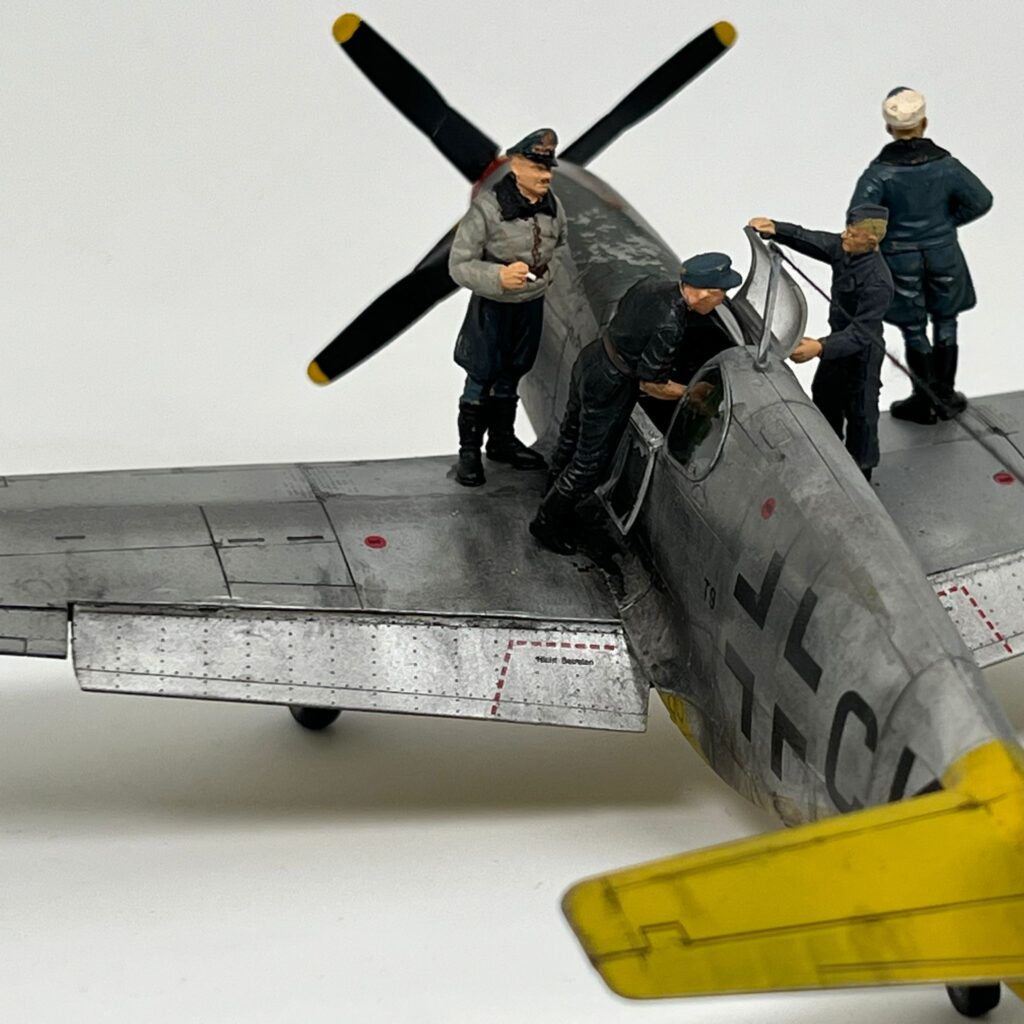
During World War II, belligerents actively searched reliable data concerning their opponent’s equipment. This was particularly true of air forces, which could obtain a decisive tactical advantage if given the opportunity to examine enemy aircraft. The most famous example of this was the Japanese A6M Zero fighter : American forces managed to salvage a copy of this “invincible” fighter shortly after the battle of Midway. Restoring it to flyable status, they discovered the aircraft had many weaknesses and were able to devise tactics that exploited those weaknesses to maximum effect. On the European front, the large number of Allied aircraft flying – and crashing or ditching – over Axis soil meant that, sooner or later, the Luftwaffe would be able to recuperate Allied aircraft wrecks, study them and, hopefully, restore them to flying status. The P-51 Mustang brought the Luftwaffe so much trouble that the Germans certainly longed to get their hands on an airworthy model…
Due to the sheer size of the Allied air offensive upon Germany, it was inevitable that a certain number of combat aircraft would fall into the hands of the Luftwaffe. In fact, both sides of the conflict conducted intense intelligence on all crashed and damaged enemy aircraft that happen to come down on their own territory. In Germany, the Luftwaffe put the recovery of crashed aircraft into a widespread system. Repairable aircraft were put back into the air, other were used as a source of spare parts or recycle fuel and lubrication oils or ammunition. Everything was collected, sorted and directed to special units operating the captured aircraft or gathering technical intelligence.

The most famous user of captured aircraft was KG-200, whose special missions have remained clouded in mystery. However, it was not the infamous KG-200 but another, smaller, unit that was to make the most out of the captured aircraft. In 1943, Hauptmann ‘Ted’ Rosarius was tasked with forming a Versuchsstaffel of captured enemy aircraft that would serve to familiarise pilots of the Reichsverteidigung (German air defence) with the strengths and weaknesses of Allied fighter aircraft. This unit, the 2nd Staffel of the Versuchtverband Oberkommando der Luftwaffe (Trials and Research Unit of the Luftwaffe High command) received all of the captured aircraft. Once those had been thoroughly flown and tested, they were flown to different frontline units. This unusual formation became known as the Wanderzirkus Rosarius (Rosarius’ travelling circus).
The aircraft tested by the Circus included P-38 Lightnings, at least three P-47 Thunderbolts, Spitfires, Mosquitoes and a Typhoon. Interestingly, at least one of the Spitfires was incomplete and had been refitted with the nose and engine of a Bf 109, making it a most curious hybrid. A B-17 was also used on such tours to show the Luftwaffe’s pilots what the aircraft’s strength were, and, more to the point, what its weaknesses were. By studying what the defensive guns’ firing arcs were, where the armour and fuel tanks were located, german pilots gained invaluable knowledge.
All of these captured aircraft had their original nationality markings removed and replaced with German Balkenkreuz crosses. In most cases, the original paint scheme was retained, although the underside and tail section were painted in bright RLM 04 yellow, lest some overzealous anti-aircraft gun battery crew fire at the aircraft the Luftwaffe had spent months acquiring and restoring. The unit’s code was T9.
Sources concerning the exact identity and number of Mustangs that flew in the Rosarius Circus are rare and usually lack precision and/or reliability. It would appear at least two P-51B/C and up to four P-51D were operated by the Circus.

One of the first attested Mustang in German hands was “T9+CK” in early 1944. Its origins remain unclear : did the aircraft land with little or no damage in occpied territory or was it built from different wreckages? It kept the usual US Olive Drab camouflage pattern, apart from the underside and tail section which were painted yellow, and the new nationality marks. Soon, the American fighters stopped being camouflaged : the USAAC was seeking to destroy the Luftwaffe the air and saw no interest in camouflaging their aircraft. In addition to making the aircraft more visible, the absence of paint also slightly reduced the weight and accordingly improved performance. Thus “T9+CK” was rid of its Olive Drab paint, to match the new Mustangs’ performance as faithfully as possible. This aircraft was tested at Rechlin and later operated out of Hanover-Wunstorf in the summer of 1944.

The Kit
Tamiya North American P-51B Mustang
No: 61042
Scale: 1:48
Released: 1995
An old and nice kit used in this diorama. I changed the painting scheme and found sources to learn how to paint as “T9-CK”. The kit was nice and nothing need extra to do it.









Sources:
http://mustang.gaetanmarie.com/articles/germany/germany.htm
http://www.ipmsstockholm.org/magazine/2001/12/stuff_eng_dacoba_p51b.htm

Be the first to comment